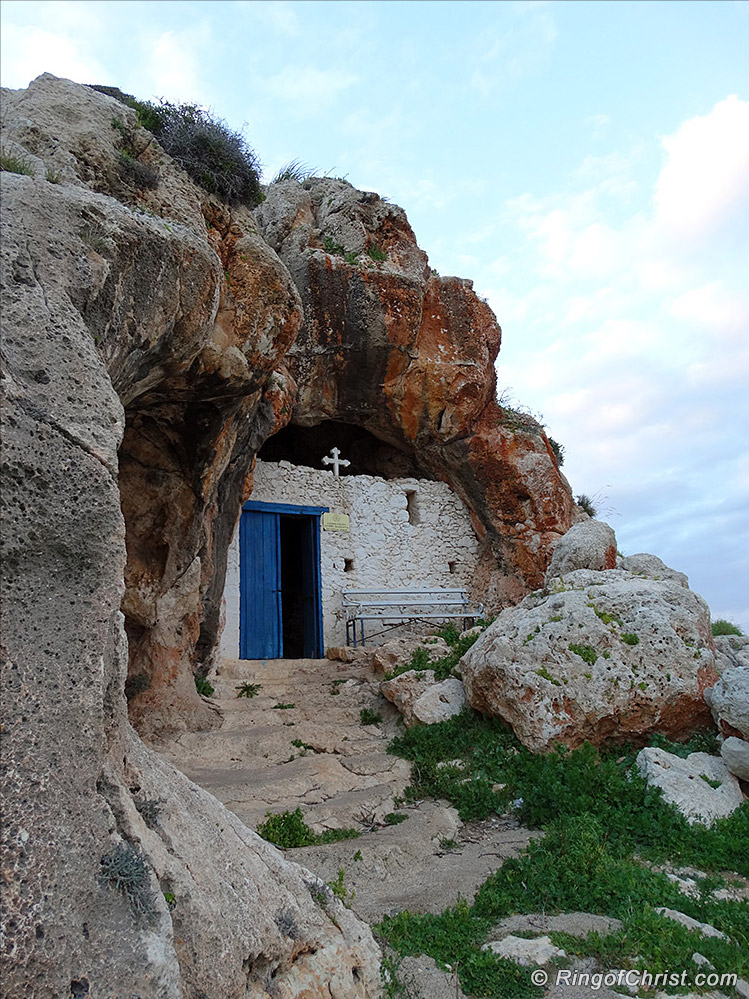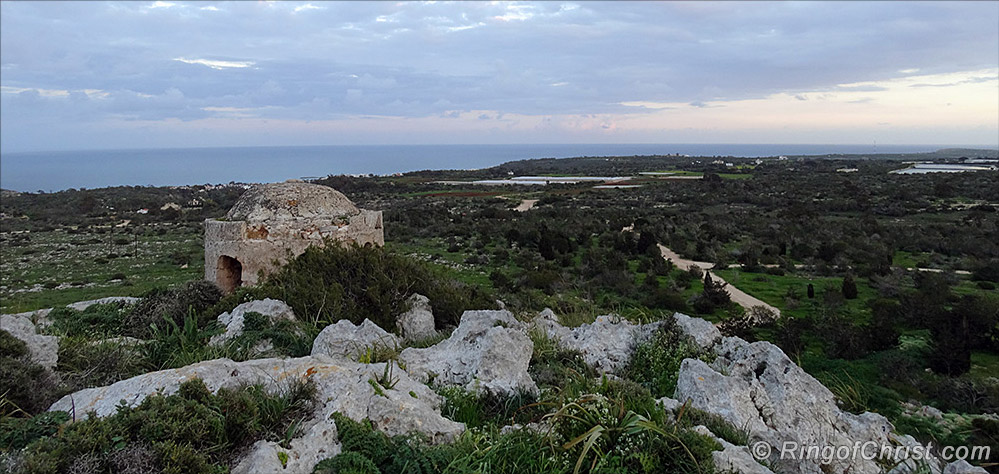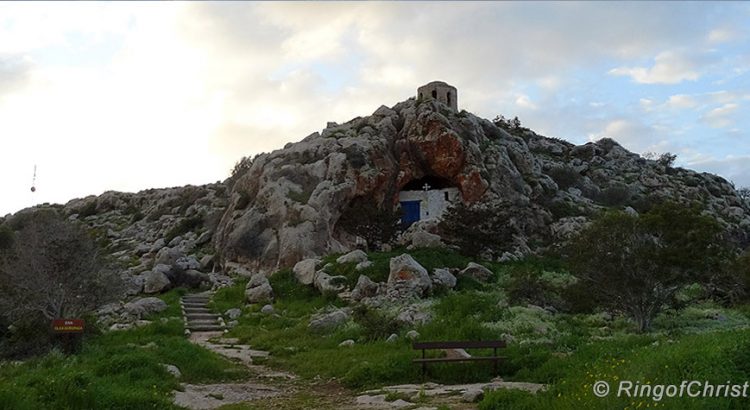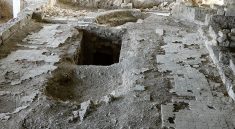
There are two different versions why the church cave has the name: The Holy Forty. Some believed the large number of bones found in the cave were those of 40 early Chrisitan martyrs. Others said the forty stalactites in the cave represented the 40 martyred soldiers of Sabaste in Lesser Armenia. In either case, the cave has been a place of worship from the earliest centuries of Christianity.
In 1877, Luigi Palma di Cesnola, American Consul and amateur archeologist wrote: “My guide told me with religious awe they were the bones of ‘Forty Saints.’ ” Cesnola was referring to the large number of petrified bones found in the floor and walls of the cave, forming a solid mass.
In 1901, Miss Dorothea Bates came to Cyprus in conjunction with the National History Museum of London (NHML) to scientifically study the bones that Cesnola and others had written about.




By 1902 the samples she had sent back were confirmed to be those of a specie of dwarf hippopotamus that had roamed the island in the 13th century BC becoming extinct between 11,000 to 9,000BC because of human predators.
The 40 saints did not die in the church, but 40 soldiers were martyred in Armenia. In 330AD the Christian soldiers endured torture and death, but never renounced their faith by making sacrifices to King Licinius as they were ordered to do.
The Feast Day of the 40 Martyred Soldiers of Sabaste is March 9th. They are highly revered in the Orthodox Church. The faithful come especially on the feast day to celebrate the liturgy and to commemorate the Holy Forty. The church is cleaned and freshly painted each year in preparation.
“Lord, we are forty who are engaged in this combat; grant that we may be forty crowned and that not one be wanting to this sacred number.”

Today, the well maintained church is a solitary place of quiet prayer and meditation, with beautiful views of the Mediterranean Sea and eastern Cyprus.


